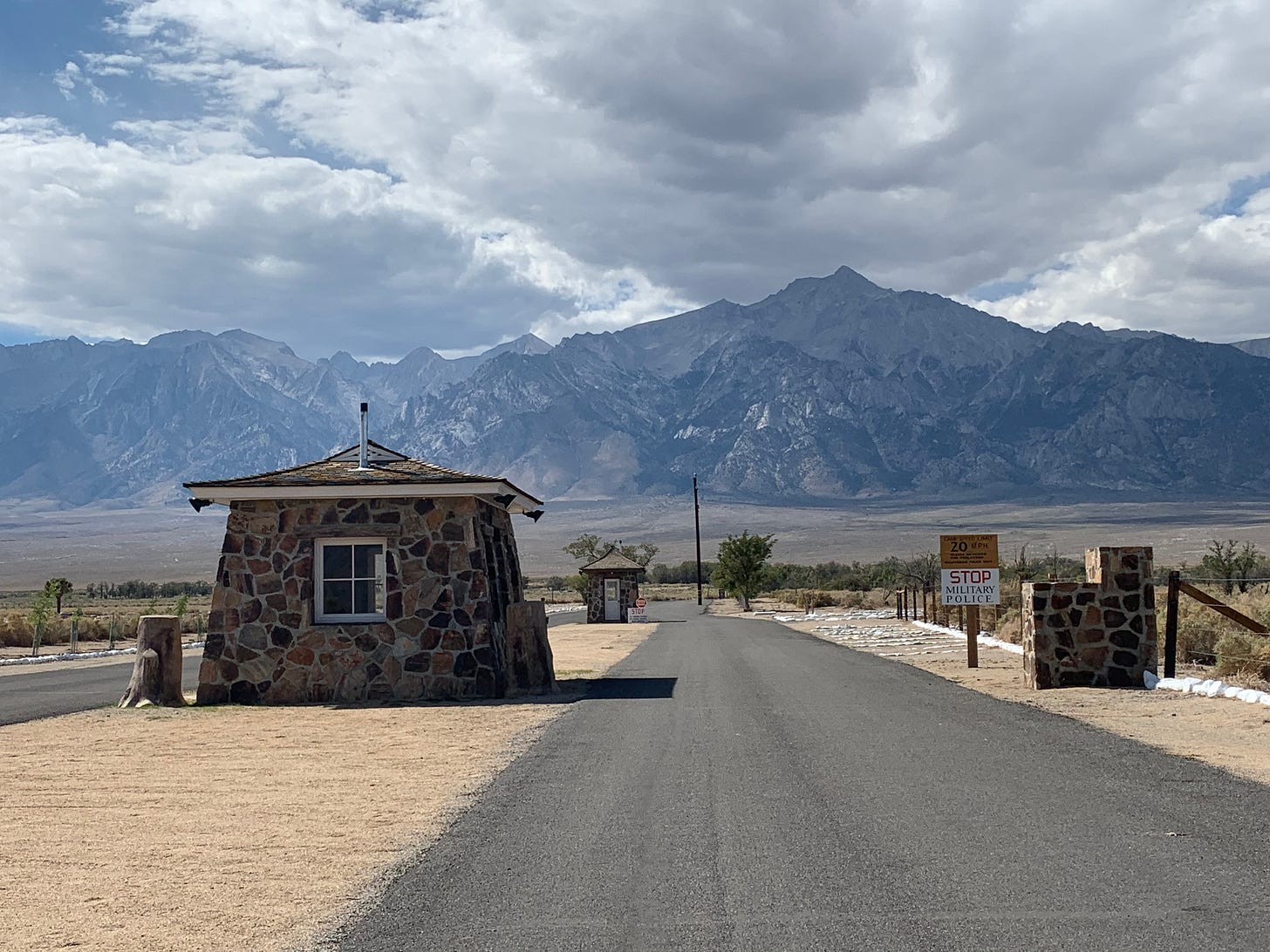The New DEI: Diminishing, Erasing, and Ignoring
Our government is hard at work forgetting the history of Japanese Americans and many others
The chaos of the first few months of the Trump administration has provided plenty of fodder for reflection and commentary. Today, I’d like to focus on a relatively small casualty of the administration’s actions: the erasure of the sacrifices of Japanese Americans.
I say “relatively small” because people’s lives and careers are currently being upended by the careless restructuring of government agencies and programs. And in at least some cases, beneficiaries of these programs will suffer and die. In the midst of those realities, it may seem trivial to focus on history. But Musk’s chainsaw is carving up the past as well as the present.
I have focused narrowly on the history of Japanese Americans because I know something about it. In a previous post, I documented the experience of my grandparents and father at Manzanar prison camp (a story I also recounted in Learning to Disagree). As I noted, places like Manzanar are easy to ignore—the camp is located four hours away from Los Angeles in the middle of the California desert. Nobody goes to Manzanar to vacation or shop. They go to confront and experience the cost of American injustice.
Two weeks ago, as part of its cuts to the National Park Service, the Trump administration reduced the hours of the Manzanar Visitor Center. In a subsequent lawsuit, the Japanese American Citizens League (JACL) joined other plaintiffs in challenging the administration’s actions. JACL’s filing noted “existing and threatened NPS cuts threaten JACL and its members’ access to former incarceration sites, disrupting a core way that JACL and its members interact with, teach, and learn about this tragic part of American history.” And the organization underscored that DOGE cuts to the National Park Service have already “caused the termination of one of the three NPS staffers at the Minidoka National Historic Site in Idaho and two NPS archaeologists at the Manzanar National Historic Site in California.”
Earlier this week, amidst a purge of thousands of government webpages containing “diversity initiatives and gender ideology,” the United States Army deleted its page honoring the 442nd Infantry Regiment, an all-Japanese unit that served during World War II. Comprised of soldiers whose family members were incarcerated at places like Manzanar while they served, the 442nd became the most decorated combat unit in American history.
Sadly, the efforts to forget the history of Japanese Americans are not even limited to the Trump administration. This past fall, the Wall Street Journal reported that President Biden’s appointee as the Archivist of the United States had “ordered the removal of prominent references to such landmark events as the government’s displacement of indigenous tribes and the incarceration of Japanese-Americans during World War II from planned exhibits.” As the Journal article elaborated:
Shogan and her top advisers told employees to remove Dorothea Lange’s photos of Japanese-American incarceration camps from a planned exhibit because the images were too negative and controversial. . . . Shogan’s aides also asked staff to eliminate references about the wartime incarceration from some educational materials.
The JACL expressed grave concern that “the National Archives is pursuing a policy of erasing Japanese American and other histories from the public record.”
Remembering well means accounting for our past mistakes as well as our successes. That’s not always pleasant or fun, but it’s essential to understanding who we are and who we are to become. And when it comes to historical sites and museums, that means taxpayer dollars and government workers are a necessary part of our shared national commitment to speak truthfully about our past and to honor those who suffered and sacrificed so much.






Thanks for drawing attention to this, John. As you say, perhaps not the most dramatic casualty at the moment, but an important casualty nonetheless.
An important and human story to highlight in the midst of "move quickly and break things."